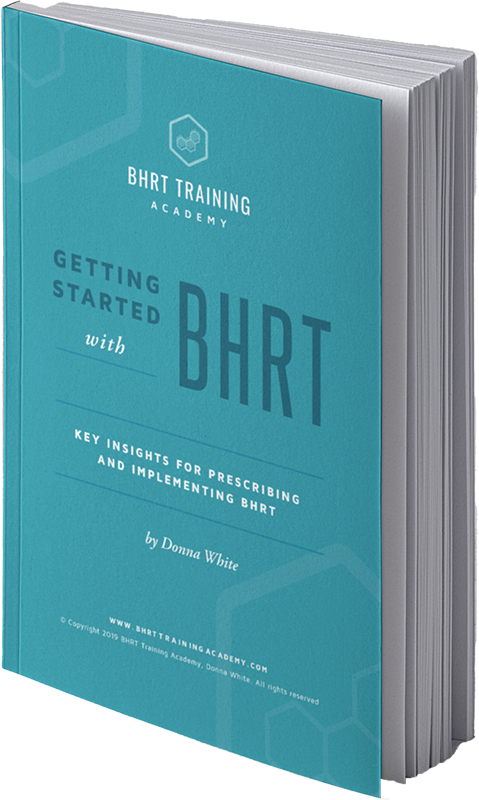Why is Hormone Testing so Important to BHRT?

Hormone testing is an essential part of Bioidentical Hormone Replacement Therapy (BHRT).
Testing is used from the initial assessment phases of treatment all the way to follow up monitoring months and even years after the treatment occurs.
Therefore, it is important as a practitioner to have a full understanding of the different types of hormone testing, what they are used for, and how they are implemented.
BHRT hormone testing – the basics
When done effectively, hormone testing can assist you in not only detecting the hormone imbalances which make the client a candidate for BHRT, but also monitors dosing, and can often result in increased patient compliance.
Due to the intricate interactions of hormones, it is critical that testing is inclusive of the sex hormones, adrenal hormones, and thyroid hormones in order to assess hormone status accurately. In many cases, patients may have signs and symptoms that glucose and insulin testing is required too.
The combination of lab results with a review of symptoms and history can inform you of the necessary treatment protocols for the optimal outcomes of each patient.
Prior to recommending BHRT for a patient, there are four types of tests that can be used to determine endogenous hormone levels:
- Serum
- Saliva
- Capillary Blood Spot urine
- Dried urine
Each of these methodologies offers particular benefits and limitations that need to be considered when deciding which method to use.
Based on the BHRT dosing form the patient is taking, and the desired parameters you as the provider want to measure, it is important to utilize the appropriate method of hormone testing.
Considering BHRT as an addition to your practice? There couldn’t be a better time. Click here to schedule a free strategy call.
Hormone testing methods
Serum testing
Measuring hormones in serum is somewhat limited because serum “free” hormone levels can only be effectively measured for testosterone in men.
Though commonly accepted and available, serum labs make no distinction between hormones bound to binding proteins (such as sex hormone-binding globulin) and free hormones that are available to act on the hormone receptor in the hormone-responsive tissue.
The steroid hormones deliver their message to cells by binding with their specific receptors on the cell surface as well as within the cell. They must be “free or unbound” hormones to bind.
As these hormones circulate through the liver, they become protein-bound with sex hormone-binding globulin or albumin and undergo phase II metabolism, which makes them water-soluble for excretion.
There are two other limitations to serum testing for hormones. First, it is inconvenient to assess hypothalamus-pituitary-adrenal (HPA) axis dysfunction via serum since this requires measuring cortisol levels four times during the day. Additionally, hormone metabolites cannot be measured in the serum.
Salivary hormone testing
Salivary testing measures the “free” or “unbound” sex hormones and adrenal hormones that are available to act on the hormone receptor in the hormone-responsive tissue. Saliva testing is an efficient method of measuring hormones since the non-protein bound bioavailable hormones diffuse easily from the blood capillaries into the salivary gland and then into saliva.
Saliva testing is also useful to monitor the change in hormone levels when topical supplementation is given.
Dried urine hormone testing
A newer option, dried urine testing offers additional clinically relevant information hormone levels and the hormone metabolites. These levels give the practitioner further insight into how the patient is metabolizing each hormone. Parameters include a 24-hour urine equivalent for the extensive hormone metabolites of cortisol, progesterone, estrogens, androgens, and the added benefit of providing the diurnal cortisol pattern. Dried urine hormone testing is also one of the more convenient testing methods for the patient themselves as it does not require collecting large amounts of samples.
Capillary blood spot hormone testing
Capillary blood spot tests are “whole” blood drawn with a finger prick. This is mostly capillary blood as opposed to venous blood. The “whole” blood contains nutrients, hormones, and oxygen to feed the tissues. Venous blood is devoid of these components. Since capillary blood feeds the cells, hormones detected in capillary blood reflect a more accurate assessment of tissue hormone levels than serum.
Saliva test kits, dried urine, or capillary blood spot testing kits are available from CLIA certified labs. Kits are kept in medical practices for distribution to patients. Tests are performed by patients in the privacy of their home and then shipped directly back to the lab for analysis. Lab results are sent to the physician. This process is convenient for testing hormones first thing in the morning when hormones are at their highest levels, testing during the mid-luteal phase for women having menstrual cycles, and four times daily when testing for diurnal cortisol patterns.
Additional lab testing
Comprehensive hormone assessment also includes additional lab testing. These typically include thyroid testing: TSH, Free T3, Free T4, Reverse T3, and TPO. Optional additional labs include Vitamin D, Ferritin, FSH and LH, B12, HgA1c, and Fasting Insulin.
Repeat hormone testing
Once patients have been placed on BHRT and/or nutraceutical therapy, monitoring symptoms and repeat hormone testing is suggested for optimal patient outcomes.
Repeat testing is typically done in 2 to 3 months after treatment is initiated. Thereafter, labs may be repeated every 3, 6, or 12 months. It is also important to monitor symptom changes in conjunction with labs before making dosing changes.
When in doubt, treat patient symptoms versus lab results.
Not sure what labs you can use for hormone testing? Download our list of reputable hormone testing labs here!
Ready to learn more about how BHRT could fit into your practice? Click here to schedule a strategy call and get started.
Enjoyed this article? Here are three more to help you:
BHRT Frequently Asked Questions
What are bioidentical hormones and are they safe for your patients?

Get the quick read ebook,
Getting Started with BHRT -
Key Insights to Prescribing and Implementing BHRT.
CME's - Earn while you learn.
